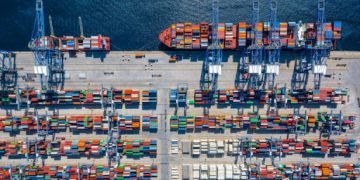The United States is experiencing a remarkable surge in container imports, marking one of the most significant growth streaks in recent years. This trend highlights shifting trade patterns and the evolving dynamics of global supply chains, as coastal ports adjust to changing import flows and logistical demands.
Key Drivers of the Growth
- Economic Recovery Post-Pandemic:
- Increased consumer demand for goods is driving higher import volumes.
- Retailers are replenishing inventories ahead of peak shopping seasons.
- Shifts in Trade Routes:
- East Coast and Gulf Coast ports are seeing increased traffic as shippers diversify from traditionally dominant West Coast ports.
- Factors include labor disputes, infrastructure investments, and proximity to growing markets in the Southeast and Midwest.
- E-Commerce Boom:
- The continued rise of online shopping has fueled demand for faster and more reliable supply chain solutions.
Coastal Shifts in Focus
- East Coast Ports:
- Ports such as Savannah, Charleston, and New York/New Jersey have seen double-digit growth, thanks to improved infrastructure and expanded capacity.
- Gulf Coast Ports:
- Houston and others are emerging as key players, leveraging proximity to Central and South American trade lanes.
- West Coast Ports:
- Los Angeles and Long Beach remain critical hubs but are facing competition due to congestion and labor uncertainties.
Challenges Amid Growth
- Infrastructure Pressure:
- Ports need to handle the surge in volume while avoiding bottlenecks.
- Investments in rail and intermodal connections are crucial to keeping goods moving inland.
- Sustainability Goals:
- The rise in imports increases the need for greener logistics practices to reduce emissions and environmental impact.
- Global Trade Volatility:
- Geopolitical tensions and regulatory changes could impact import flows and trade partnerships.
Future Outlook
The historic growth in U.S. container imports reflects the resilience of global trade and the adaptability of American ports. To sustain this momentum, investments in technology, infrastructure, and sustainable practices will be vital. Ports that prioritize efficiency and connectivity will be well-positioned to handle the continued evolution of global supply chains.
Stay tuned with The Logistic News for the latest updates and insights on trade and logistics trends.
#GlobalTrade #ContainerImports #LogisticsGrowth #SupplyChainTrends #SustainableLogistics























